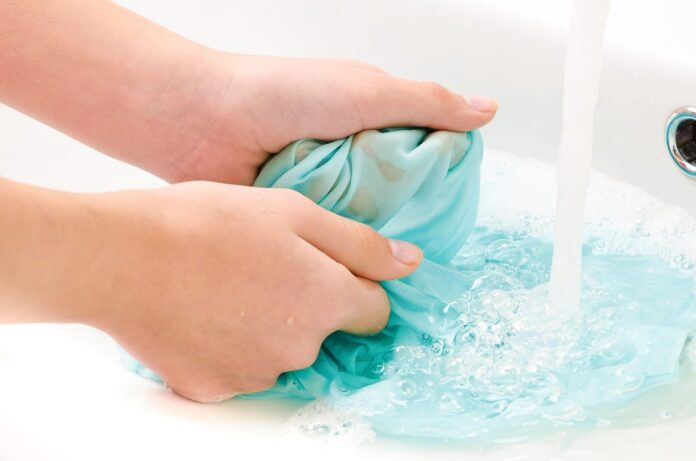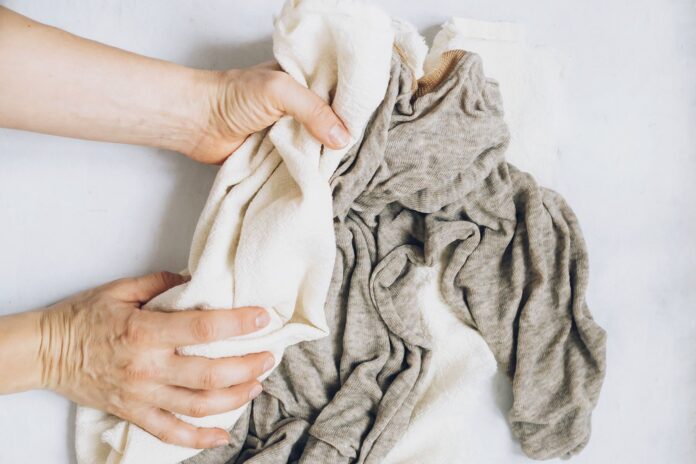How do you know if your clothes are delicate? Most laundry experts agree that lightweight fabrics, lace, fine knits, chiffon, silk, and velvet fabrics have to be categorized as delicate wear. These special fabrics need a different approach than you use to wash and dry your other clothes.
Most people drop off their delicate clothes at their trusted laundry service since it requires careful handling to help maintain their appearance, shape, and longevity. People in New York bring their delicate clothes to Liox, and if you are not in NYC, it is best to look for a trusted laundry service around you.
But, if you want to handle your delicate clothes at home, you can give them their needed care by following these expert tips.
Before we start, please note that these tips are not applicable for suede, leather, fur, and fine silk. These fragile fabrics are best cared for at the dry cleaners.
1. Read Wash Label on Delicates

A rule of thumb when washing your delicate clothes is to read the wash label carefully. The wash label is the best place to start learning to clean your delicates properly. Most delicates have tags with “dry clean” or “hand wash,” these labels indicate that these clothes need extra care when washing in a machine. But, if you are in doubt, hand washing is the safest method.
Now, the question is, can you machine wash delicates? It depends on their material. If the wash tag indicates “dry clean,” you can use either hand wash or do it in the washer, as long as you follow the washing instructions. However, if the tag only says “dry clean only,” you have to bring them to the dry cleaners.
You might say it is expensive bringing them to the cleaners. The truth is, you are saving time and money doing so. You do not want to ruin your expensive silk dress, leather jacket, or rayon skirt trying to save a few bucks, right?
2. Pre-Treat Stains Immediately

It is pretty unfortunate and nerve-racking when your delicate clothes get stained. The moment it is stained, or you have discovered the stain, you must pre-treat them immediately. Before pre-treat the stains, you must know these extra steps to make stains more manageable.
Most of us use a commercial stain remover on silk items. But, this is not advisable—the same with using bleach to remove the stain completely. Instead, use natural stain removers to ensure the safety of the fabric materials; you can use white vinegar, baking soda, or lemon juice; these natural cleaners are not harsh and slow-acting.
When pre-treating stains, dab the natural remover solution on the stained area and rub it gently into the fabric with your finger. If you are dealing with a lacey trim and other fragile material, it requires extra time. Be patient when handling stains. Aggressively rubbing the stain damages the material.
If you are dealing with heavy stains, it is best to let the remover sit on the stained area for five minutes before you rub it gently. Sometimes you cannot immediately wash or bring the garment to the laundry service right away, if this is the case, try calling a laundry pickup and delivery service. Do not let the stain dry. Dried stains are harder to remove.
3. Learn How to Handwash Delicates

When you hand wash delicates, you have to use a clean container. Do not wash or rinse your clothes in a sink.
Sort the delicates by color; lighter ones should not go with dark-colored garments as color fade or transfer may happen.
When washing, only use cold water. Although warm is enough, it might be hot enough for the garments to shrink or fade colors. Moreover, use detergent formulated for washing delicate items by hand. But, if you cannot find this type of detergent, you can recreate a homemade cleaning solution.
Create the solution with a cup of hot water, one teaspoon of baby shampoo, and a drop of your favorite essential oil to give it some fragrance. Do not overdo when mixing the solution. Moreover, do not take it personally if the solution is not effective. This may take a trial and error with different types of delicates before you finally get the appropriate detergent-to-water ratio.
When you wash the clothes, swirl them gently in circles, side-to-side, and up and down. Do not be complacent with handwashing, and you still have to be careful with delicate trims. It might get tangled, so it is essential to provide delicate handling.
You can clean delicates in a second container with clean water. Swirl the clothes like you did when washing. After you have rinsed the garments, it is time to dry. Delicate clothes are not advisable to be dried under the sun.
Moreover, instead of wringing out the delicate clothes. You can fold them against a basin edge to remove the excess moisture on the clothes. Do not wring out delicates because it damages the fabric or trims to avoid your delicate clothes from getting out of shame.
4. Wash Regularly

Even when orders came rushing in, you have to remember that your laundry has to be checked. When sorting the clothes, ensure that you have turned the delicates inside out and ensured that there are zippers to hide.
After you have watched and washed the laundry, you still have to be careful. Delicate items will not come back. You have to remember that delicate clothes have to be dried, but not inside a dryer. It might shrink the garments.
Now, lay the clothes flat on a clean, white towel. You can remove the extra moisture first and bring it back after eating.
Final Thoughts
Follow these tips to clean your properly delicate clothes and make them last longer and look their best. Always seek help from a professional dry cleaner or laundry expert if you do not know how to do it properly. Do not waste your money’s worth of investment.

